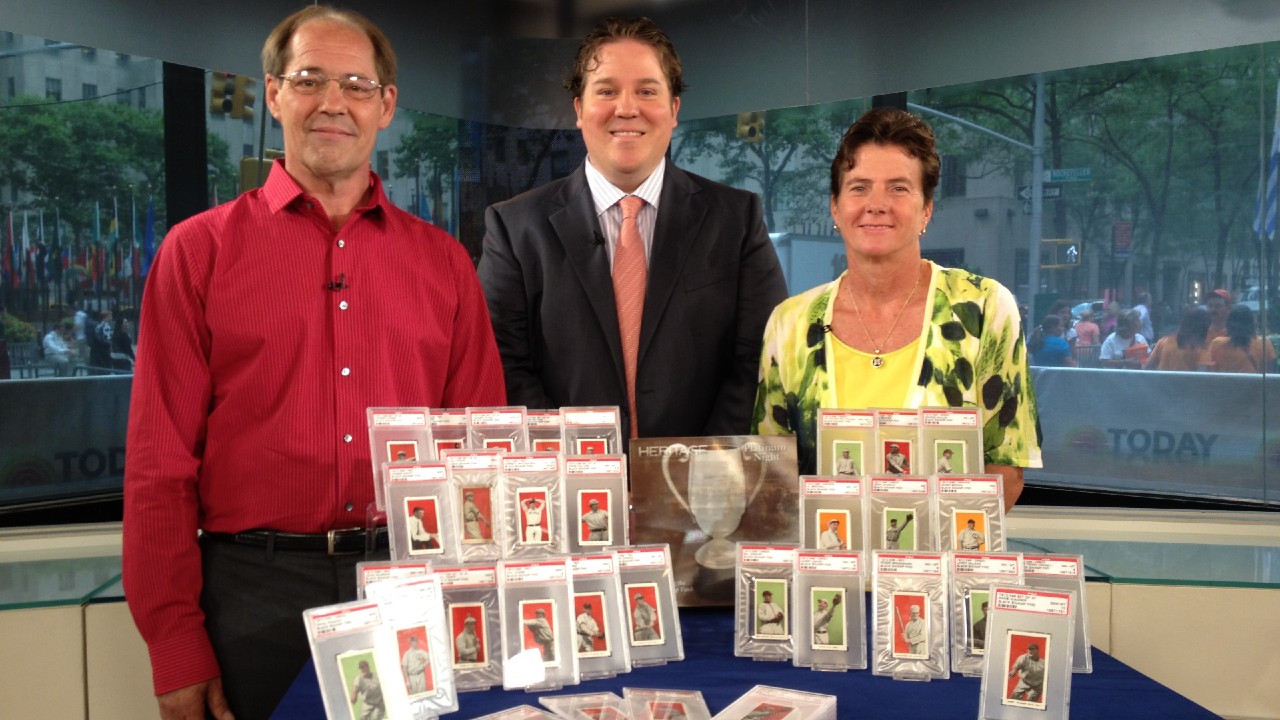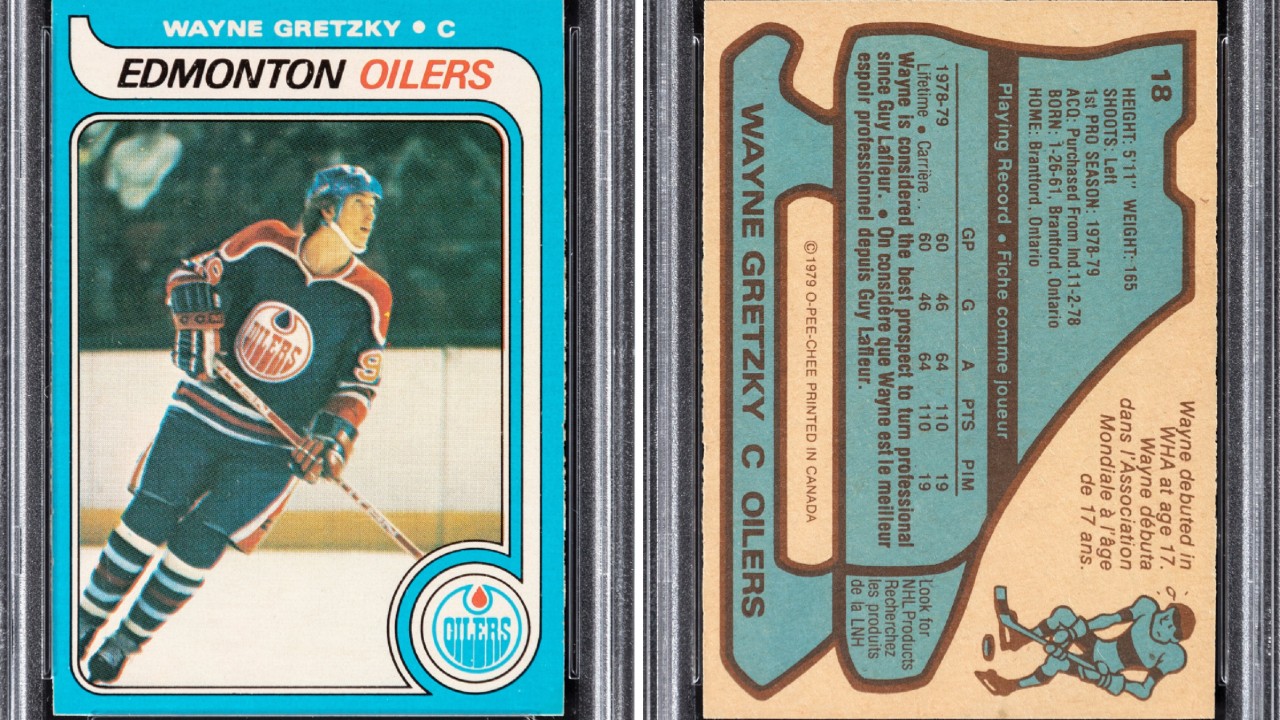Ken McAvoy was on site at London, Ont.’s O-Pee-Chee plant when the sports card bubble burst.
O-Pee-Chee had been contracted to produce thousands of cases of sports cards for Topps, which was trying to keep pace with a booming-but-supersaturated market. McAvoy, an O-Pee-Chee shift supervisor from 1980-98, saw the spoils of the boom firsthand. After years of prosperity, the U.S. card dealers who visited his plant had swapped their rusted-out vans for Jaguars.
Then one day in the spring of 1993, a Topps rep called and told McAvoy to stop production. The market was flooded and sales had tanked, practically overnight. Soon, the Jaguars stopped showing up.
“It sank as fast as it rose,” McAvoy said, “which is really incredible.”
More incredible, perhaps, is the fact that the sports card market is rising again. Last week, a 1979 O-Pee-Chee Wayne Gretzky rookie card sold for US$1.29 million, becoming hockey’s first seven-figure card.
[snippet id=4167285]
Chris Ivy, the director of sports auctions at Dallas-based Heritage Auctions (through which the Gretzky card sold), was surprised to see the industry prosper during the spread of COVID-19 as other investment types depreciated.
So how did the market get here? And what makes the Gretzky card such a Great One?
“Obviously we’re selling sports collectibles and cards,” Ivy said. “It’s nothing anybody needs to survive, right?”
Certainly not. But when closures and lockdown orders arrived, the card market became a respite for hobbyists and investors with a surplus of time and discretionary income. There’s also an age factor: 80s kids from the card-collecting heyday are now adults with enhanced buying power. Adding time, money and a splash of nostalgia creates a solid recipe for sales.
To understand the recent growth in the card market, consider this: in 2016, the last time a “gem mint” (the highest card grade) O-Pee-Chee Gretzky rookie card was on the market, it sold for US$465,000. In four years, that value nearly tripled.
It’s no surprise that Gretzky — widely considered hockey’s greatest player — is pictured on the sport’s most expensive card. But that doesn’t explain much about the card’s substantial value.
What drives up the price is the rarity of a 70s-era card surviving this long in perfect shape — especially given the conditions it was manufactured in.
“There was a lot of things that could go wrong, and the process was all human,” McAvoy said of operations at the O-Pee-Chee plant. “Quality wasn’t No. 1 back then — it was production.”
Once a player’s card was designed, it was printed onto a rectangular sheet of thin, recycled cardboard (called “Fraser board” because of the B.C.-based mill it came from) that fit 132 copies each.
The sheets were fed through machines that sliced the top and bottom of each card, using cast iron knives that dulled over time and varied the quality of the cut. O-Pee-Chee paid machine operators a bonus based on how many cards they produced per hour, which influenced how frequently the knives were changed.
“They’re not gonna call the mechanic and say, ‘The knives need changing,’” McAvoy explained. “They might just say, ‘I’m gonna keep the machine running and let the next shift worry about it.’”
Finally, the cards were placed in collator machines, which cut the sides to produce individual copies. But here’s the catch: four of the collators cut two sheets at time, while one collator cut one sheet at a time and made cleaner edges.
As a result, most cards emerged with problematic cuts, described on the Heritage Auctions site to be “as jagged as those on Terry Sawchuk’s face.”
Ivy estimates that 90 per cent of O-Pee-Chee’s cards from that era would’ve been graded below gem mint before they even left the factory. Today, of 5,711 O-Pee-Chee Gretzky rookies graded by PSA — the world’s largest third-party authentication company — only two possess a perfect score.
Topps produced a near-identical Gretzky rookie card (save for bilingual text on the back) in the U.S., for which there are only two gem mint versions out of 6,048. But, thanks largely to the differences in processing, it is considerably less valuable than its Canadian counterpart. A gem mint Topps went for US$720,000 during Heritage’s auction last week.
“I could never have imagined that,” McAvoy said.
Both the O-Pee-Chee and Topps cards outperformed their bidding projections with Heritage, a positive sign for the status of the industry. And in May, Heritage held an auction of various items that yielded over $10.5 million despite having an estimated value of $8 million.

Like anything, the stock of sports cards cannot strictly trend upward — but by learning from its past mistakes, the market can remain diverse and competitive.
“We’re not running into the problem we saw in the late-80s and early-90s of overproduction,” Ivy said. “You’ve got the hardcore collectors, and then you’ve got people who are participating on more of an investment scale as well. So yeah, there can be a correction like any other market, but I think the signs look strong for it to remain heading in the right direction right now.”
Makes sense, given that right now the market can lift cards like the ’79 Gretzky to record-setting heights. But the card’s price tag might look unbelievable to some.
Perhaps, despite knowledge of the pandemic-induced market conditions — and the rarity of gem mint cards emerging from O-Pee-Chee’s oft-precarious manufacturing methods — the ’79 Gretzky just seems like a really expensive 57 square centimetres of cardboard.
“You can look at anything in that context,” Ivy said. “You know, what is a piece of art? What is a Van Gogh, except a piece of canvas with some paint smudges on it, right?
“But that piece of canvas with paint smudges has a lot of value to collectors. It’s no different with sports collectibles and with cards. Yes, it’s a piece of cardboard with an athlete’s picture on it. But in particular conditions for particular reasons, some of them are very scarce. And some of them are very desirable.”
[relatedlinks]



 2:17
2:17 0:54
0:54 1:14
1:14
COMMENTS
When submitting content, please abide by our submission guidelines, and avoid posting profanity, personal attacks or harassment. Should you violate our submissions guidelines, we reserve the right to remove your comments and block your account. Sportsnet reserves the right to close a story’s comment section at any time.